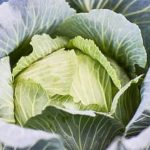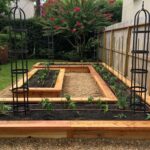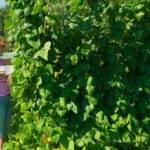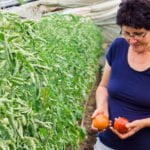Are you ready to dive into the world of Midwest vegetable gardening? From the fertile soil to the unique climate, the Midwest offers a prime environment for cultivating a wide range of delicious and nutritious vegetables. Whether you’re a seasoned gardener or a beginner looking to get your hands dirty, exploring the Midwest’s potential for vegetable gardening is an exciting endeavor.
The Midwest region boasts diverse and rich soil that is ideal for growing a variety of vegetables. With its combination of nutrient-rich earth and temperate climate, aspiring gardeners have an opportunity to cultivate an impressive bounty throughout the growing season. Understanding the specific conditions that make the Midwest an optimal location for vegetable gardening is crucial for successful cultivation.
In this article, we will take an in-depth look at what makes Midwest vegetable gardening unique. From the best vegetables to grow in this region to essential tips on soil preparation, planting techniques, maintenance, and pest control strategies – we’ll cover it all. So grab your gloves and shovel as we embark on this journey into Midwest vegetable gardening.
Best Vegetables to Grow in the Midwest
When it comes to Midwest vegetable gardening, the region’s unique climate and soil conditions make it an ideal place to grow a wide variety of vegetables. Whether you have a large backyard garden or just a few containers on a patio, there are plenty of options for growing your own fresh produce in the Midwest. Here is a comprehensive list of vegetables that thrive in the Midwest climate, along with tips for successful cultivation:
1. Tomatoes – This classic garden favorite does well in the Midwest, especially when provided with plenty of sunlight and proper support for their vines.
2. Peppers – Both sweet and hot peppers can be grown successfully in the Midwest, as long as they are planted in well-drained soil and receive adequate warmth and sunlight.
3. Green Beans – These easy-to-grow vegetables do especially well in the Midwest, producing an abundant harvest throughout the summer months.
4. Carrots – With their long taproots, carrots require loose, well-drained soil to thrive, making them an excellent choice for many areas within the Midwest.
5. Lettuce – Many varieties of lettuce can be grown in the Midwest during the cooler spring and fall months, providing fresh greens for salads and sandwiches.
6. Cucumbers – These vining plants do best when provided with ample space to spread out and climb, producing an abundance of crisp cucumbers throughout the season.
7. Squash – Both summer squash and winter squash varieties can be successfully grown in the Midwest, provided they have plenty of room to spread out and regular watering.
8. Onions – Onions are hardy vegetables that do well in the cool weather of early spring or late fall in the Midwest, making them a versatile addition to any vegetable garden.
9. Radishes – Quick-growing radishes are perfect for early planting in the spring or late planting in the summer for a fast harvest before cooler weather sets in.
10. Kale – This nutrient-dense leafy green thrives in cooler temperatures, making it an excellent choice for fall harvests in many parts of the Midwest.
The key to successful vegetable gardening in the Midwest is selecting plants that are well-suited to both its climate and growing season. By choosing from this comprehensive list of vegetables along with provided helpful tips for cultivating each type mentioned above will help ensure a bountiful harvest from your Midwest vegetable garden this year.
Preparing the Soil for Midwest Vegetable Gardening
When it comes to successful Midwest vegetable gardening, proper soil preparation is key. The unique climate and soil conditions of the Midwest provide an ideal environment for growing a variety of vegetables, but it’s essential to ensure that the soil is well-prepared to support healthy plant growth. This section will provide detailed instructions on how to prepare the soil for Midwest vegetable gardening, including the importance of soil testing and the best organic amendments to use.
The Importance of Soil Testing
Before planting your vegetable garden in the Midwest, it’s crucial to conduct a soil test. Soil testing provides valuable information about the current pH levels, nutrient content, and overall condition of the soil. Many local agricultural extension offices offer affordable or free soil testing services, which can help you determine what adjustments need to be made in order to create optimal growing conditions for your vegetables.
Choosing the Best Organic Amendments
Based on the results of your soil test, you may need to make amendments to improve the quality of your soil. Common organic amendments include compost, manure, and organic fertilizers. Compost is an excellent choice for improving overall soil structure and fertility, while well-aged manure can provide valuable nutrients for vegetable plants. Additionally, organic fertilizers derived from natural sources such as seaweed or fish emulsion can help replenish essential nutrients in the soil.
Soil Preparation Techniques
Once you’ve determined what amendments are needed, it’s time to prepare your soil for planting. Begin by thoroughly mixing in any organic amendments using a rototiller or garden fork. It’s important to incorporate these amendments evenly throughout the entire planting area to ensure that your vegetables receive uniform access to essential nutrients and minerals as they grow.
By following these detailed instructions for preparing the soil in a Midwest vegetable garden with organic amendments and proper testing techniques, you can create an optimal environment for growing healthy and abundant vegetables throughout the growing season.
Planting and Maintenance Tips
When it comes to Midwest vegetable gardening, proper planting and maintenance techniques are key to a successful harvest. Whether you are a seasoned gardener or just starting out, there are essential steps to follow for planting and caring for your vegetable garden in the Midwest.
Choosing the Right Location
One of the first steps in planting a successful vegetable garden in the Midwest is choosing the right location. Most vegetables require at least 6-8 hours of full sun, so it’s important to find a sunny spot in your yard. Additionally, consider factors such as soil drainage and proximity to water sources when selecting the ideal location for your garden.
Preparing the Soil
Before planting, it’s crucial to prepare the soil properly. Conduct a soil test to determine its pH level and nutrient content. Based on the results, you may need to amend the soil with organic matter such as compost or aged manure. This will ensure that your vegetables have access to the necessary nutrients for healthy growth.
Planting and Watering
When it comes time to plant your vegetables, be sure to follow spacing recommendations on seed packets or plant labels. Proper spacing allows plants to receive adequate sunlight and air circulation. After planting, water your vegetable garden deeply and consistently throughout the growing season. It’s important not to let the soil dry out completely, especially during hot summer months.
Maintenance Throughout the Growing Season
Throughout the growing season, be diligent in maintaining your vegetable garden. This includes regular weeding, mulching to retain moisture and suppress weeds, and monitoring for pests or diseases. Additionally, consider providing support such as stakes or trellises for vining crops like tomatoes or cucumbers. Regular observation of your plants will also allow you to identify any issues early on and take corrective action.
By following these essential planting and maintenance tips for Midwest vegetable gardening, you can maximize your chances of a bountiful harvest while enjoying a rewarding gardening experience.
Dealing With Midwest Garden Pests and Diseases
Midwest vegetable gardening boasts a wide array of crops that thrive in its unique climate and soil conditions. However, this favorable environment also attracts various pests and diseases that can affect vegetable gardens. To effectively manage these challenges, it is essential to have a well-rounded approach that focuses on organic and sustainable solutions.
One common pest in Midwest vegetable gardening is the Colorado potato beetle, which can quickly defoliate potato plants if left unchecked. To combat this pest organically, consider introducing natural predators such as ladybugs or encouraging beneficial insects like parasitic wasps, which prey on Colorado potato beetles. Additionally, rotating your crops annually can help minimize the infestation of these pests.
Another common issue for Midwest vegetable gardeners is fungal diseases such as powdery mildew and early blight. One effective organic solution is using neem oil, a natural fungicide that helps prevent and control fungal infections on vegetables. Additionally, proper spacing between plants to allow for good air circulation can reduce the risk of fungal diseases.
It’s important for Midwest vegetable gardeners to stay proactive in identifying and managing garden pests and diseases in order to achieve a successful harvest. By adopting organic and sustainable strategies, gardeners can effectively address these challenges while minimizing their environmental impact. Taking steps to encourage natural biodiversity in the garden can also contribute to a healthier ecosystem overall.
| Pest/Disease | Organic Solution |
|---|---|
| Colorado Potato Beetle | Introduce natural predators such as ladybugs or parasitic wasps; Rotate crops annually |
| Fungal Diseases (e.g. powdery mildew, early blight) | Use neem oil as a natural fungicide; Maintain proper plant spacing for good air circulation |
Maximizing Space in a Midwest Vegetable Garden
When it comes to midwest vegetable gardening, space can often be limited, particularly for those living in urban areas or with smaller yards. However, there are several creative solutions that can help make the most of the available space and still yield a bountiful harvest.
One popular method is container gardening, which allows for vegetables to be grown in pots, hanging baskets, or other containers. This technique is not only space-efficient but also offers flexibility as containers can be moved around to optimize sunlight exposure.
Another effective strategy for maximizing space in a Midwest vegetable garden is vertical growing techniques. This involves using trellises, cages, or other structures to support vining plants such as tomatoes, cucumbers, and peas, allowing them to grow upwards rather than taking up valuable ground space. Vertical gardening can also include the use of wall-mounted planters or hanging systems to grow a variety of vegetables without using much floor space.
Moreover, square foot gardening is an efficient way to maximize space in a small area while still yielding impressive results. This method involves dividing the growing area into small square sections (typically 1 foot by 1 foot) and planting different crops based on how much space they require. By carefully planning and spacing out the plantings, square foot gardening can help gardeners maximize their yields while minimizing wasted space.
| Vegetable Gardening Technique | Description |
|---|---|
| Container Gardening | Allows for growing vegetables in pots or other containers for those with limited space. |
| Vertical Growing | Involves utilizing structures like trellises or wall-mounted planters to grow vertically instead of horizontally. |
| Square Foot Gardening | A method of dividing the growing area into small square sections for maximum efficiency. |
Harvesting and Preserving Midwest Vegetables
When it comes to harvesting and preserving your Midwest vegetable garden, timing is everything. Knowing the optimal time to harvest your vegetables ensures that you enjoy them at their peak flavor and freshness. Different vegetables have different indicators of when they are ready to be harvested, and it’s essential to pay attention to these cues.
Harvesting Tips for Midwest Vegetable Gardeners
- Tomatoes: Harvest when fully ripe and the fruit gives slightly when gently squeezed.
- Zucchini: Pick when the fruits are 6-8 inches long for best flavor and texture.
- Carrots: Harvest when the tops are 1 inch in diameter, but can be left in the ground for storage until needed.
In addition to knowing when to harvest your vegetables, understanding how to properly preserve them is key to enjoying a bountiful harvest all year round. Canning, freezing, and storage are popular methods for preserving vegetables in the Midwest.
Preserving Your Midwest Harvest
- Canning: Learn how to safely can your produce using a water bath or pressure canner to create homemade pickles, jams, salsas, and more.
- Freezing: Discover the best practices for blanching and freezing vegetables to maintain their quality over an extended period of time.
- Storage: Find out which vegetables are best stored in a root cellar or cool, dark area of your home for long-term use throughout the winter months.
By mastering the art of harvesting and preserving your Midwest vegetable garden, you can enjoy fresh, nutritious produce from your garden year-round while minimizing waste and maximizing your gardening efforts.
Community and Resources for Midwest Vegetable Gardeners
In conclusion, Midwest vegetable gardening offers a unique and rewarding opportunity for both experienced and novice gardeners alike. The region’s climate and soil conditions create an ideal environment for a wide variety of vegetables to thrive, providing ample opportunities for a successful and bountiful harvest. By following the tips and guidelines provided in this comprehensive guide, gardeners can navigate the challenges and make the most of their Midwest vegetable garden.
In addition to the practical aspects of growing vegetables in the Midwest, it is important to highlight the valuable resources and community support available to local gardeners. Whether it is connecting with like-minded individuals through local gardening clubs, or accessing fresh produce and other gardening essentials at farmer’s markets, there are numerous opportunities for gardeners to learn from each other, share experiences, and build lasting connections within the community.
These resources not only provide valuable information and assistance but also contribute to the sense of camaraderie that makes Midwest vegetable gardening a truly enriching experience.
Ultimately, Midwest vegetable gardening offers a wealth of benefits beyond just fresh produce. It provides an opportunity to connect with nature, promote sustainability through organic practices, and contribute to one’s overall well-being. With the knowledge gained from this guide and the support of local resources and communities, gardeners in the Midwest can enjoy a successful and fulfilling experience as they cultivate their own bountiful harvests through sustainable and rewarding methods of vegetable gardening.

If you’re looking to get into vegetable gardening, or are just looking for some tips on how to make your current garden better, then you’ve come to the right place! My name is Ethel and I have been gardening for years. In this blog, I’m going to share with you some of my best tips on how to create a successful vegetable garden.





